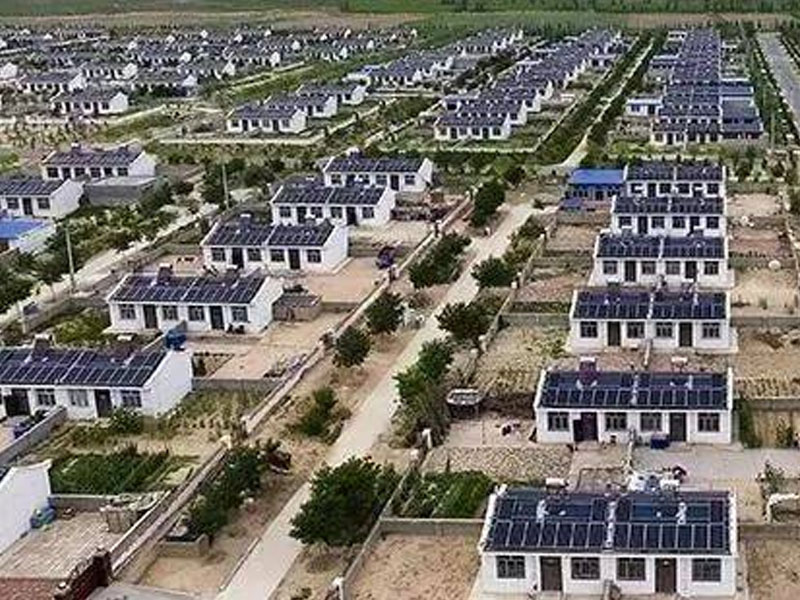The operational characteristics of the distribution network have changed due to the impact of distributed PV power generation on the grid. With the development of distributed PV, energy storage and micro-grids, the distribution network has gradually evolved from a passive network to an active network, and the operation and maintenance management of the distribution network has become more complex.
It has increased the difficulty of power balancing in the grid. Under the existing technical conditions, most regions (counties) do not have distributed PV power generation monitoring and output forecasting means. Traditional load forecasting tools are unable to calculate the impact of distributed generation, especially in areas with a high proportion of distributed PV connections, which has a more pronounced impact on the accuracy of load forecasting. In most cases, the grid needs to retain more spare capacity to cope with changes in distributed PV output. The overlay of distributed PV, centralized PV and wind generation makes it difficult to adjust for peaks during low load hours in some areas during the day, and more so during holidays.
The frequency regulation and voltage regulation performance of the power grid is significantly reduced. Firstly, distributed PV mostly uses constant power factor (COS)φ = 1) in its operation and does not provide reactive power. The off-grid trend in centralized grid-connected areas becomes lighter or even regressive, making the voltage in local areas of the system rise significantly. If the load slot effect is superimposed on holidays, the voltage may exceed the limit, which may lead to PV power disconnection in severe cases.
With the rapid growth of distributed PV grid-connected capacity, a large amount of load is balanced locally, which has a significant offsetting effect on the increase in grid supply load and amounts to the replacement of some conventional generating units. However, distributed PV is unable to provide reactive power support during faults, resulting in insufficient dynamic reactive power support, a gradual reduction in transient voltage levels and, in severe cases, a long-term voltage dip.
Distributed PV only provides active power to the power system in response to changes in light resources and cannot adapt to the adaptive regulation capabilities of grid frequency fluctuations. As the proportion of conventional power sources in the generation mix decreases, so does the system's ability to regulate frequency.
The reliability of the power supply is affected. On the one hand, in the event of a line fault, distributed PV can supply power to out-of-service customers, especially for those very important loads, and the average annual outage time will be significantly reduced. On the other hand, under grid-connected distributed PV conditions, new influences need to be considered to assess the reliability of the distribution network, such as the emergence of islands and the stochastic nature of the output power of distributed generation.
The operational characteristics of the distribution network have changed due to the impact of distributed PV power generation on the grid. With the development of distributed PV, energy storage and micro-grids, the distribution network has gradually evolved from a passive network to an active network, and the operation and maintenance management of the distribution network has become more complex.
It has increased the difficulty of power balancing in the grid. Under the existing technical conditions, most regions (counties) do not have distributed PV power generation monitoring and output forecasting means. Traditional load forecasting tools are unable to calculate the impact of distributed generation, especially in areas with a high proportion of distributed PV connections, which has a more pronounced impact on the accuracy of load forecasting. In most cases, the grid needs to retain more spare capacity to cope with changes in distributed PV output. The overlay of distributed PV, centralized PV and wind generation makes it difficult to adjust for peaks during low load hours in some areas during the day, and more so during holidays.
The frequency regulation and voltage regulation performance of the power grid is significantly reduced. Firstly, distributed PV mostly uses constant power factor (COS)φ = 1) in its operation and does not provide reactive power. The off-grid trend in centralized grid-connected areas becomes lighter or even regressive, making the voltage in local areas of the system rise significantly. If the load slot effect is superimposed on holidays, the voltage may exceed the limit, which may lead to PV power disconnection in severe cases.
With the rapid growth of distributed PV grid-connected capacity, a large amount of load is balanced locally, which has a significant offsetting effect on the increase in grid supply load and amounts to the replacement of some conventional generating units. However, distributed PV is unable to provide reactive power support during faults, resulting in insufficient dynamic reactive power support, a gradual reduction in transient voltage levels and, in severe cases, a long-term voltage dip.
Distributed PV only provides active power to the power system in response to changes in light resources and cannot adapt to the adaptive regulation capabilities of grid frequency fluctuations. As the proportion of conventional power sources in the generation mix decreases, so does the system's ability to regulate frequency.
The reliability of the power supply is affected. On the one hand, in the event of a line fault, distributed PV can supply power to out-of-service customers, especially for those very important loads, and the average annual outage time will be significantly reduced. On the other hand, under grid-connected distributed PV conditions, new influences need to be considered to assess the reliability of the distribution network, such as the emergence of islands and the stochastic nature of the output power of distributed generation.

 online service
online service +86 592-5211-388
+86 592-5211-388 info@esolarfirst.com
info@esolarfirst.com sales004_solarfirst
sales004_solarfirst sales12_solarfirst
sales12_solarfirst sales10_solarfirst
sales10_solarfirst +86 18959208686
+86 18959208686